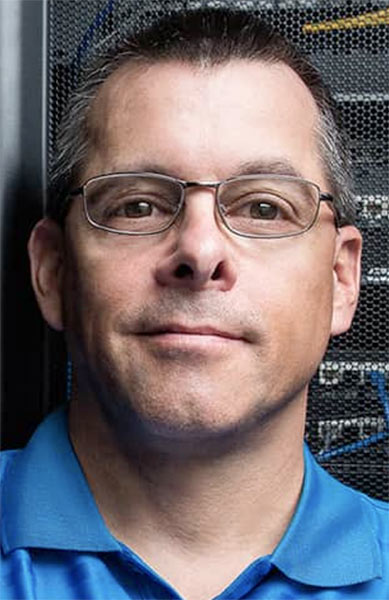

DNS Security |
Sponsored by |

|
 The Domain Name System Security Extensions (DNSSEC) is a suite of IETF-developed specifications designed to validate information provided by the Domain Name System (DNS). ... When the root zone was signed in June 2010, this acted as a catalyst for TLD operators to deploy DNSSEC on their side. We have seen a gradual but significant increase in signed TLDs since then. The map in this post shows the level of DNSSEC deployment in Europe. more
The Domain Name System Security Extensions (DNSSEC) is a suite of IETF-developed specifications designed to validate information provided by the Domain Name System (DNS). ... When the root zone was signed in June 2010, this acted as a catalyst for TLD operators to deploy DNSSEC on their side. We have seen a gradual but significant increase in signed TLDs since then. The map in this post shows the level of DNSSEC deployment in Europe. more
 It's no secret that Comcast has been leading the charge of DNSSEC deployment among ISPs. For the past couple years, Comcast has been testing and pushing for the widespread adoption of DNSSEC. In the spirit of increasing adoption, I thought I would interview the DNS gurus at Comcast to see what they've learned and what advice they would give other ISPs considering DNSSEC deployment. more
It's no secret that Comcast has been leading the charge of DNSSEC deployment among ISPs. For the past couple years, Comcast has been testing and pushing for the widespread adoption of DNSSEC. In the spirit of increasing adoption, I thought I would interview the DNS gurus at Comcast to see what they've learned and what advice they would give other ISPs considering DNSSEC deployment. more
 One would think with an annual budget in excess of 60 million dollars a year and a staff of upwards of 140 (including consultants), that someone would have figured out how to prevent the organization from repeatedly shooting itself in the foot. Unfortunately not even a year of star-fish management oversight by the likes of Rod Beckstrom seems to have done the trick. Exhibit One, earlier this week on CircleID we learned about the first Root Zone DNSSEC KSK Ceremony on Wednesday 2010-06-16 in Culpeper, VA, USA. Of course given the significance of this event one would reasonably assume that ICANN might mention this somewhere on the main page of their website? more
One would think with an annual budget in excess of 60 million dollars a year and a staff of upwards of 140 (including consultants), that someone would have figured out how to prevent the organization from repeatedly shooting itself in the foot. Unfortunately not even a year of star-fish management oversight by the likes of Rod Beckstrom seems to have done the trick. Exhibit One, earlier this week on CircleID we learned about the first Root Zone DNSSEC KSK Ceremony on Wednesday 2010-06-16 in Culpeper, VA, USA. Of course given the significance of this event one would reasonably assume that ICANN might mention this somewhere on the main page of their website? more
 In January we presented the glorious history of the MIT spam conference, today we present the schedule for the first day. Opening session will be from this author, Garth Buren with a topic entitled The Internet Doomsday Book, with details be released the same day as the presentation. Followed by Dr. Robert Bruen with a review of activities since the last MIT spam conference... more
In January we presented the glorious history of the MIT spam conference, today we present the schedule for the first day. Opening session will be from this author, Garth Buren with a topic entitled The Internet Doomsday Book, with details be released the same day as the presentation. Followed by Dr. Robert Bruen with a review of activities since the last MIT spam conference... more
 A small but intriguing paragraph in the VeriSign settlement says that ICANN gets to maintain the root zone. I thought they did now, but I guess VRSN does, following advice from ICANN. This has two and a half effects. The most obvious is political -- if ICANN rather than VRSN is distributing the root zone, it removes the symbolic significance of VeriSign's A root server. The second is DNSSEC key management. Until now, the contents of the root zone have been pretty boring, a list of names and IP addresses of name servers. If DNSSEC is deployed in the root, which is not unlikely in the next few months, ICANN rather than VeriSign will hold the crypto keys used to sign the root zone. If a tug of war develops, whoever holds the keys wins, since without the keys, you can't publish a new version of the root with changed or added records unless you publish your own competing set of keys and can persuade people to use them. more
A small but intriguing paragraph in the VeriSign settlement says that ICANN gets to maintain the root zone. I thought they did now, but I guess VRSN does, following advice from ICANN. This has two and a half effects. The most obvious is political -- if ICANN rather than VRSN is distributing the root zone, it removes the symbolic significance of VeriSign's A root server. The second is DNSSEC key management. Until now, the contents of the root zone have been pretty boring, a list of names and IP addresses of name servers. If DNSSEC is deployed in the root, which is not unlikely in the next few months, ICANN rather than VeriSign will hold the crypto keys used to sign the root zone. If a tug of war develops, whoever holds the keys wins, since without the keys, you can't publish a new version of the root with changed or added records unless you publish your own competing set of keys and can persuade people to use them. more
 While threat actors can use any domain across thousands of top-level domains (TLDs), they often have favorites. For instance, you may be familiar with Spamhaus's 10 most-abused TLDs for spamming. WhoisXML API researchers recently built on this list by analyzing 40,000 newly registered domains (NRDs) that sported some of the listed unreputable TLDs. We called this study "DNS Abuse Trends: Dissecting the Domains Under the Most-Abused TLDs." more
While threat actors can use any domain across thousands of top-level domains (TLDs), they often have favorites. For instance, you may be familiar with Spamhaus's 10 most-abused TLDs for spamming. WhoisXML API researchers recently built on this list by analyzing 40,000 newly registered domains (NRDs) that sported some of the listed unreputable TLDs. We called this study "DNS Abuse Trends: Dissecting the Domains Under the Most-Abused TLDs." more
 Many in the network security field may be familiar with the phrase: "It's always DNS." This is a popular meme within the industry, often making reference to the internal domain name system (DNS), the dynamic host configuration protocol (DHCP) part of a company's online network, that whenever there is a network issue, it's always an issue with DNS. more
Many in the network security field may be familiar with the phrase: "It's always DNS." This is a popular meme within the industry, often making reference to the internal domain name system (DNS), the dynamic host configuration protocol (DHCP) part of a company's online network, that whenever there is a network issue, it's always an issue with DNS. more
The DNS root servers were reported by Verisign to be under unexpected attack from name servers across the Internet following ICANN's recent changes to their cryptographic master keys. more
 DNS-over-TLS has recently become a welcome addition to the range of security protocols supported by DNS. It joins TSIG, SIG(0) and DNSSEC to add privacy, and, in the absence of validating stub resolvers, necessary data integrity on the link between a full-service resolver and the users' stub resolver. (The authenticated source feature of TLS may also offer some additional benefits for those of a nervous disposition.) Good stuff. What is not good stuff is... more
DNS-over-TLS has recently become a welcome addition to the range of security protocols supported by DNS. It joins TSIG, SIG(0) and DNSSEC to add privacy, and, in the absence of validating stub resolvers, necessary data integrity on the link between a full-service resolver and the users' stub resolver. (The authenticated source feature of TLS may also offer some additional benefits for those of a nervous disposition.) Good stuff. What is not good stuff is... more
The Internet Corporation for Assigned Names and Numbers (ICANN) has postponed plans to change the cryptographic key -- a critical step in updating protection measures for the Domain Name System (DNS). more
Last week, millions of infected devices directed Internet traffic to DNS service provider Dyn, resulting in a Distributed Denial of Service (DDoS) attack that took down major websites including Twitter, Amazon, Netflix, and more. In a recent blog post, security expert Bruce Schneier argued that "someone has been probing the defences of the companies that run critical pieces of the Internet". This attack seems to be part of that trend. This disruption begs the question: Can we trust the Internet? more
FireEye announced a new piece of malware yesterday named MULTIGRAIN. This nasty piece of code steals data from Point of Sale (PoS) and transmits the stolen credit card numbers by embedding them into recursive DNS queries. While this was definitely a great catch by the FireEye team, the thing that bothers me here is how DNS is being used in these supposedly restrictive environments. more
 A few weeks ago I came across an old interview of me by ITespresso.fr from 10 years back entitled "IPv6 frees human imagination". At the time, I was talking about the contributions IPv6 was expected to make and the challenges it had to face. After reading the article again, I realized that it has become a little dusty (plus a blurred photo of the interviewee :-)). But what caught my attention the most in the interview was my assertion: "If IPv6 does not prevail in 2006, it's a safe bet that it will happen in 2007". Wow! more
A few weeks ago I came across an old interview of me by ITespresso.fr from 10 years back entitled "IPv6 frees human imagination". At the time, I was talking about the contributions IPv6 was expected to make and the challenges it had to face. After reading the article again, I realized that it has become a little dusty (plus a blurred photo of the interviewee :-)). But what caught my attention the most in the interview was my assertion: "If IPv6 does not prevail in 2006, it's a safe bet that it will happen in 2007". Wow! more
 There has been a lot of criticism about the worthiness of DNSSEC. Low adoption rates and resistance and reluctance by Registrars to take on the perceived burden of signing domains and passing-on cryptographic material are at the crux of the criticism. I'm a believer in DNSSEC as a unique and worthwhile security protocol and as a new platform for innovation. It's the reason I've long advocated for and continue to work toward a new model of DNSSEC provisioning. more
There has been a lot of criticism about the worthiness of DNSSEC. Low adoption rates and resistance and reluctance by Registrars to take on the perceived burden of signing domains and passing-on cryptographic material are at the crux of the criticism. I'm a believer in DNSSEC as a unique and worthwhile security protocol and as a new platform for innovation. It's the reason I've long advocated for and continue to work toward a new model of DNSSEC provisioning. more
 If you are at all interested in how the Internet's Domain Name System (DNS) works, then one of the most rewarding meetings that is dedicated to this topic is the DNS OARC workshops. I attended the spring workshop in Amsterdam in early May, and the following are my impressions from the presentations and discussion. What makes these meetings unique in the context of DNS is the way it combines operations and research, bringing together researchers, builders and maintainers of DNS software systems, and operators of DNS infrastructure services into a single room and a broad and insightful conversation. more
If you are at all interested in how the Internet's Domain Name System (DNS) works, then one of the most rewarding meetings that is dedicated to this topic is the DNS OARC workshops. I attended the spring workshop in Amsterdam in early May, and the following are my impressions from the presentations and discussion. What makes these meetings unique in the context of DNS is the way it combines operations and research, bringing together researchers, builders and maintainers of DNS software systems, and operators of DNS infrastructure services into a single room and a broad and insightful conversation. more